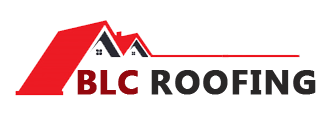When it comes to commercial roofing, understanding the different types available and their respective advantages and disadvantages is crucial. This knowledge ensures that you make informed decisions tailored to your building’s specific needs. Here, we delve deep into the world of commercial roofing, offering insights that will guide your choices.
Contents
Types of Commercial Roofs
Flat Roofs
Flat roofs have been a symbol of commercial and industrial commerce since the 1920s. Before this era, pitched roofs dominated even large commercial structures.
Advantages:
- Cost-effective due to less material requirement.
- Quick and straightforward installation, leading to potential savings.
- Variety of material choices, including rubber rolled roofing, EPDM, PVC, TPO, bitumen, and modified bitumen.
- White roofing membranes can reduce energy waste from cooling costs.
- Easier installation of solar panels, satellite dishes, and air conditioners.
- Simplified maintenance and drain cleaning.
Disadvantages:
- Poor drainage can lead to standing water.
- Material degradation due to water accumulation.
- Requires experienced contractors for proper installation.
Low-Sloped Roofs
Commonly found on factories, warehouses, and apartment buildings, low-sloped roofs may appear flat but have a slight pitch.
Advantages:
- Allows for water runoff, directing it to valleys, saddles, and drains.
- Safer working conditions compared to high-pitched roofs.
- Variety of material choices similar to flat roofs.
- Reduced chances of water-related issues due to the slight pitch.
Disadvantages:
- Heavy snow accumulation can add weight and potential damage.
Pitched Roofs
While more common in residential settings, pitched roofs are also used in commercial contexts.
Advantages:
- Increased slope ensures better water and snow runoff.
- Reduced maintenance and repair needs compared to flatter roofs.
Disadvantages:
- Maintenance and repair are more challenging due to the steep incline.
Spotlight on Commercial Roofing Materials
Metal Retrofit Roofing
This method involves re-roofing an older metal roof with a durable membrane.
Advantages:
- Cost-effective.
- Extends the life of your roof.
- Eco-friendly due to reduced waste.
- Utilizes existing roof insulation.
Disadvantages:
- While it can extend roof life by up to 20 years, a complete metal roof installation lasts between 30-60 years.
PVC Membrane Roofing
Polyvinyl chloride (PVC) is a popular and time-tested roofing material.
Advantages:
- Durable, long-lasting, and fire retardant.
- Resistant to moisture, wind, and chemicals.
- Energy-efficient due to light-colored membrane sheets.
Disadvantages:
- Slightly higher initial cost compared to TPO or EPDM.
TPO Membrane Roofing
Thermoplastic polyolefin (TPO) is a newer commercial roofing material.
Advantages:
- Affordable and cost-effective.
- Durable and flexible.
- Eco-friendly and 100% recyclable.
Disadvantages:
- Hasn’t been in use as long as other materials, leading to questions about longevity.
EPDM Membrane Roofing
EPDM is a durable synthetic rubber material.
Advantages:
- Stretchable and form-fitting.
- Excellent protection from weather.
- Suitable for cooler climates.
Disadvantages:
- Hot weather can cause shrinkage.
- Seams can degrade from UV sunlight.
Making the Right Choice with BLC Roofing
Choosing the right roofing system is crucial for the longevity and safety of your building. At BLC Roofing, we pride ourselves on offering top-notch roof repair service in Akron OH. Whether you’re considering roof installation in Akron OH or seeking the best roofing services in Akron OH, our team is here to guide you every step of the way. With our expertise, you can be confident in your roofing choices.
